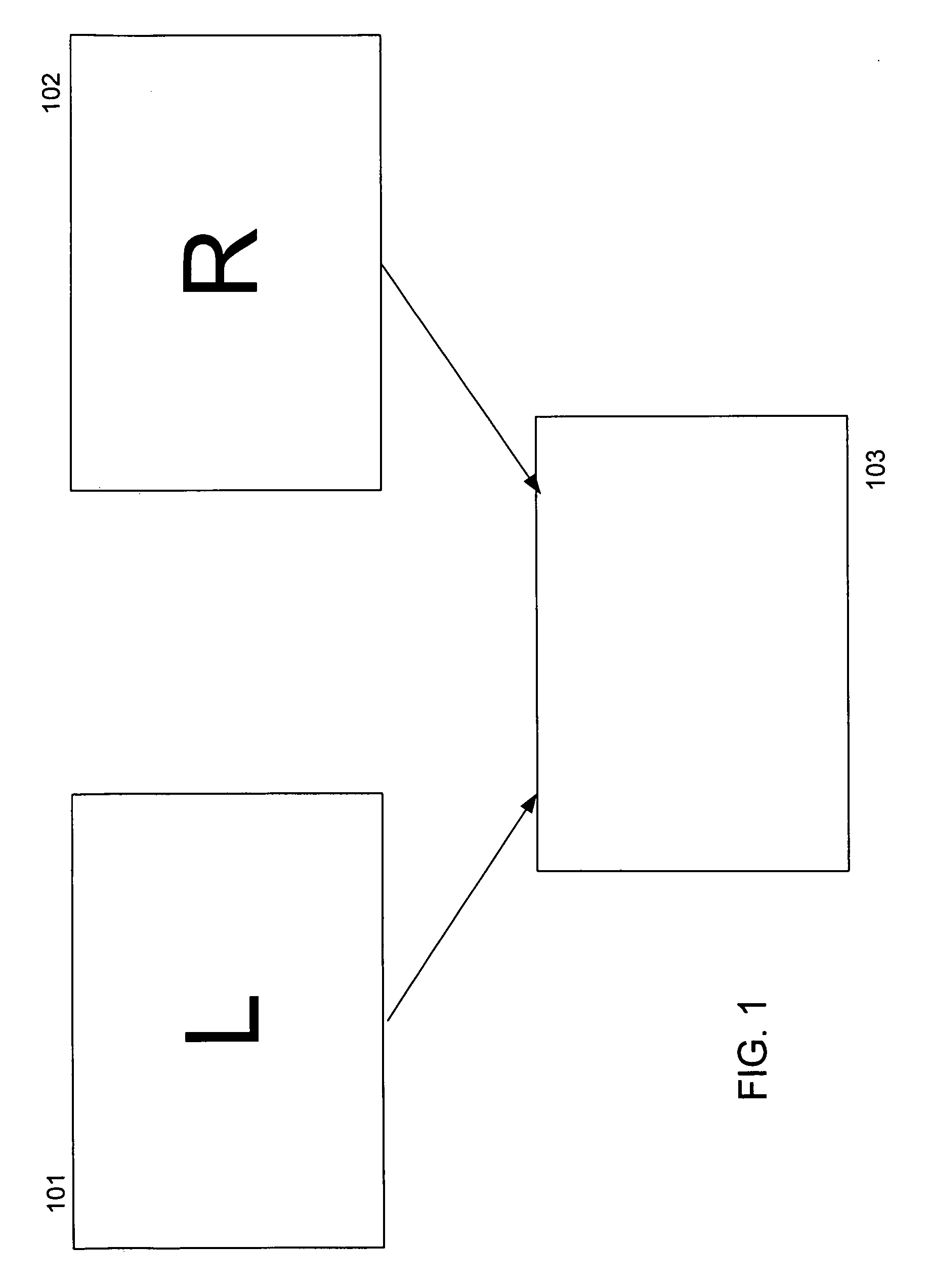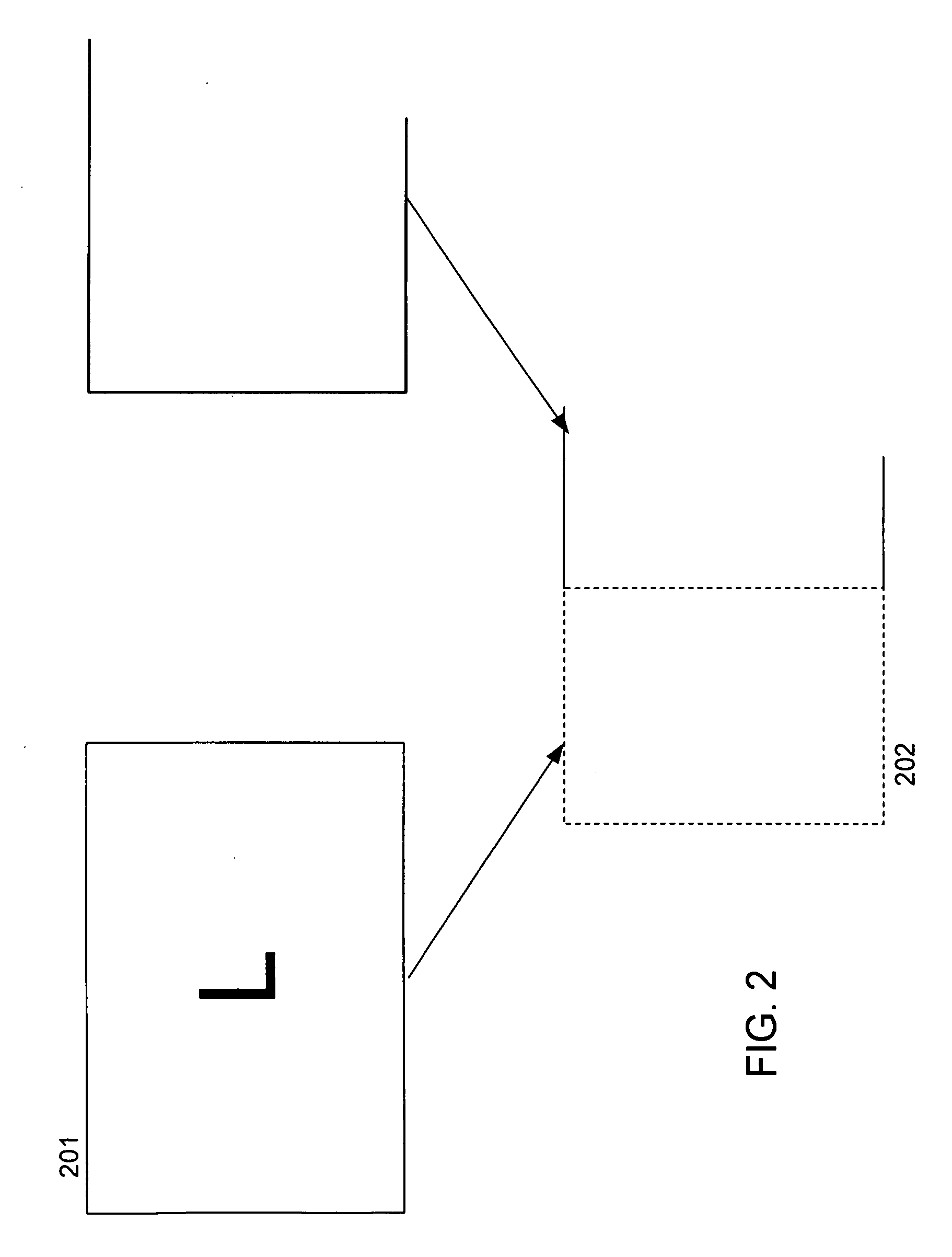Demultiplexing for stereoplexed film and video applications
- Summary
- Abstract
- Description
- Claims
- Application Information
AI Technical Summary
Benefits of technology
Problems solved by technology
Method used
Image
Examples
Embodiment Construction
[0031]The present design provides a means for transmitting stereoscopic images over existing infrastructure originally designed to transmit planar images. The present design is described in a series of related techniques. The concentration is on the multiplexing and demultiplexing of the stereoscopic image, where multiplexing is termed the “stereoplexing” of the image. Two major requirements exist for stereoscopic imaging, one for distribution to theaters (film) and the other for home entertainment (video).
[0032]In general, video applications involve removing pixels from source image data and optimization in a video system that allows for playback using a variety of display monitors and selection technologies. Film applications are used for field sequential or temporal multiplexing, where the resultant stereoscopic images are shown on big theater screens. In general, compression is less for film applications than video applications, with an emphasis on variable compression across th...
PUM
 Login to View More
Login to View More Abstract
Description
Claims
Application Information
 Login to View More
Login to View More - R&D
- Intellectual Property
- Life Sciences
- Materials
- Tech Scout
- Unparalleled Data Quality
- Higher Quality Content
- 60% Fewer Hallucinations
Browse by: Latest US Patents, China's latest patents, Technical Efficacy Thesaurus, Application Domain, Technology Topic, Popular Technical Reports.
© 2025 PatSnap. All rights reserved.Legal|Privacy policy|Modern Slavery Act Transparency Statement|Sitemap|About US| Contact US: help@patsnap.com



